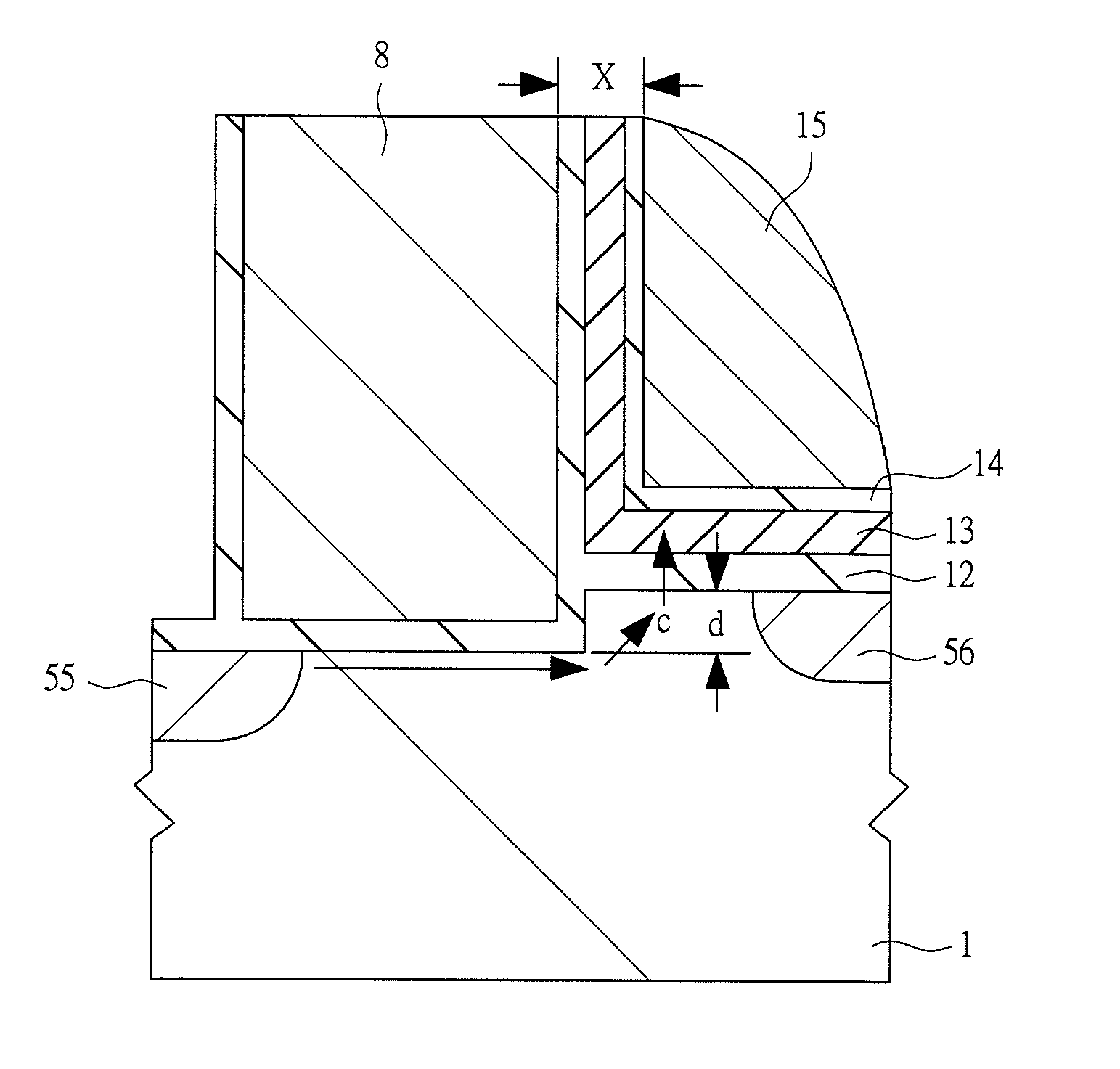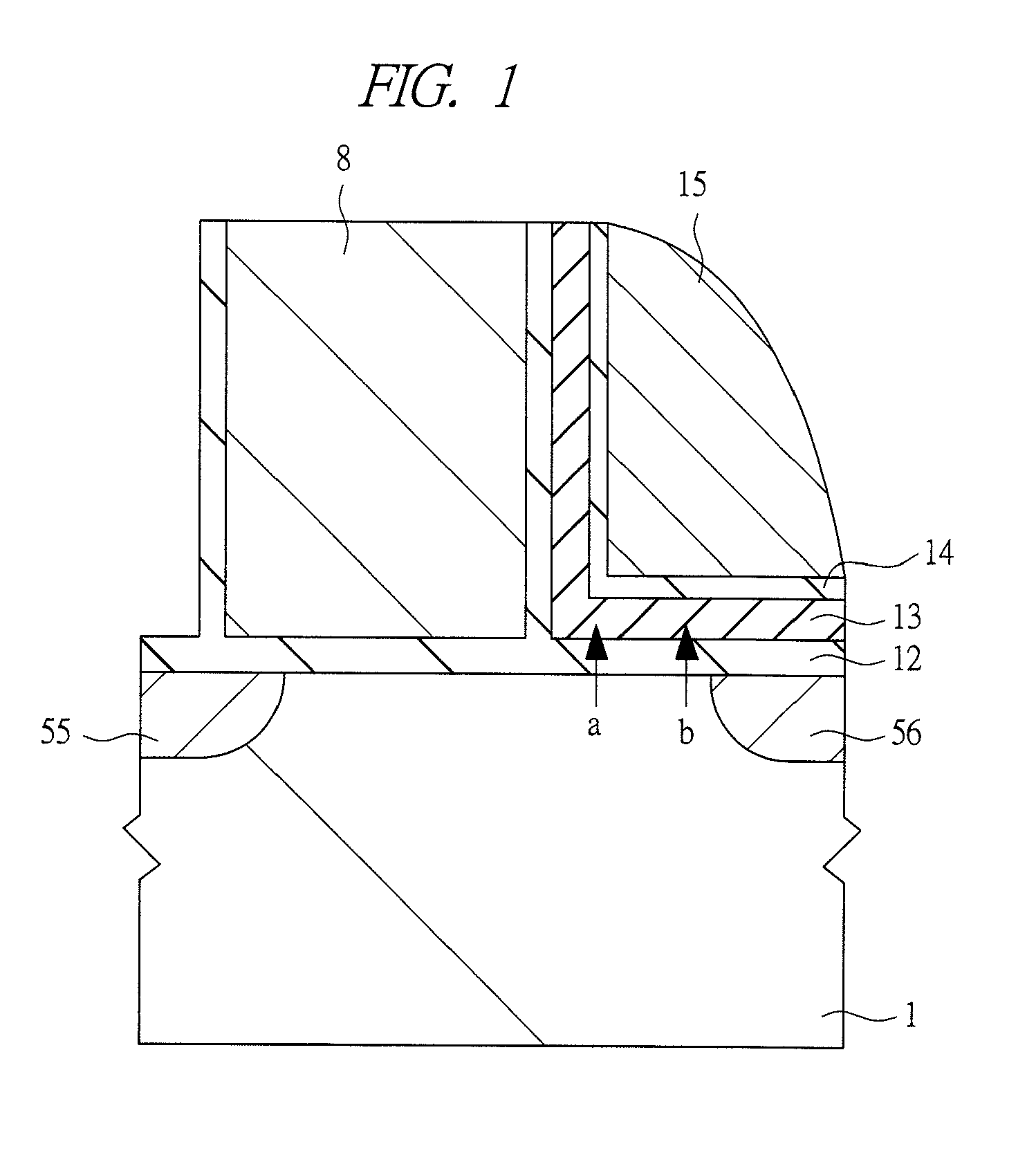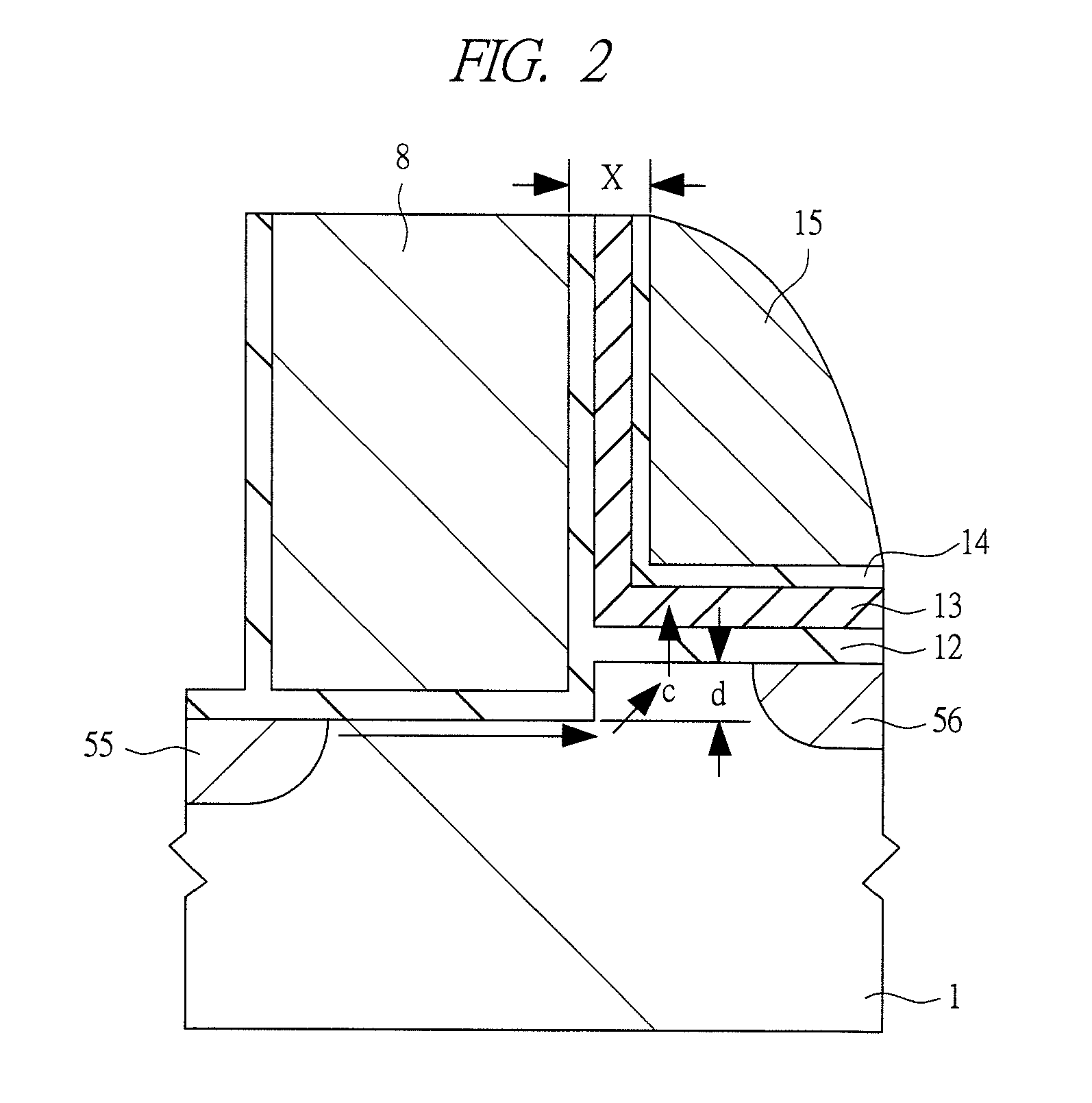Semiconductor device and method of manufacturing the same
a technology of semiconductors and semiconductors, applied in the direction of semiconductor devices, basic electric elements, electrical equipment, etc., can solve the problems of increased off-leakage current in memory cells, easy insertion of electrodes and holes, and inability to cut monos type fet off,
- Summary
- Abstract
- Description
- Claims
- Application Information
AI Technical Summary
Benefits of technology
Problems solved by technology
Method used
Image
Examples
first embodiment
[0075]FIG. 4 is a plan view of a principal part illustrating a memory array region of a semiconductor device according to a first embodiment of the present invention, and FIG. 5 is a cross sectional view taken along the line A-A in FIG. 4. Note that, in FIG. 4, illustration of a part of members is omitted to easily see a constitution of the memory array region.
[0076]The semiconductor device according to the present embodiment includes a nonvolatile semiconductor storage device having a split-gate memory cell employing a MONOS type. The split-gate memory cell is composed of a select MOS transistor and a memory MOS transistor formed on a p-type well 3 on a p-type silicon substrate 1. A gate electrode (select gate 8) in the select MOS transistor is composed of an n-type polycrystalline silicon film and is formed on a gate insulating film 7 composed of a silicon dioxide film. A gate electrode (memory gate 15) in the memory MOS transistor is composed of an n-type polycrystalline silicon ...
second embodiment
[0098]FIG. 22 is a cross-sectional view of a principal part of a nonvolatile semiconductor storage device according to a second embodiment of the present invention. Hereinafter, a method of manufacturing the nonvolatile semiconductor storage device will be explained in an order of steps with reference to FIGS. 23 to 40.
[0099]First, as illustrated in FIG. 23, a surface of a silicon substrate 1 is etched by a well-known manufacturing technique with using a silicon nitride film 40 as a mask to form device-isolation trenches 2 on a main surface of the silicon substrate 1.
[0100]Next, as illustrated in FIG. 24, the silicon nitride film 40 is removed, and a p-type well 3 and an n-type well 4 are formed on the main surface of the silicon substrate 1. At this time, the device-isolation trenches 2 are not polished by a CMP (chemical mechanical polishing) method, and still remain. Next, the silicon substrate 1 is thermally oxidized, so that a gate insulating film 5 made of silicon dioxide havi...
PUM
 Login to View More
Login to View More Abstract
Description
Claims
Application Information
 Login to View More
Login to View More - R&D
- Intellectual Property
- Life Sciences
- Materials
- Tech Scout
- Unparalleled Data Quality
- Higher Quality Content
- 60% Fewer Hallucinations
Browse by: Latest US Patents, China's latest patents, Technical Efficacy Thesaurus, Application Domain, Technology Topic, Popular Technical Reports.
© 2025 PatSnap. All rights reserved.Legal|Privacy policy|Modern Slavery Act Transparency Statement|Sitemap|About US| Contact US: help@patsnap.com



